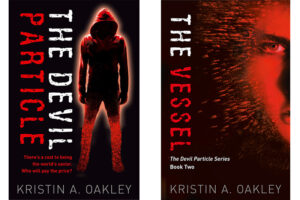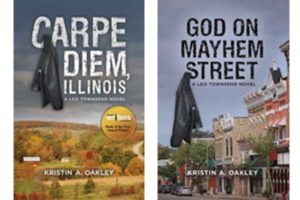I vividly remember when my daughter Caitlin learned to read. One morning when she about six years old, Caitlin stormed into the kitchen with a library picture book in her hand. It wasn’t a favorite book, in fact, it was the first time we’d taken it out. I think I’d read it to her only once. Caitlin slammed the book on the kitchen table and read it out loud without missing a beat. Then she slammed it shut, and said, “There!”
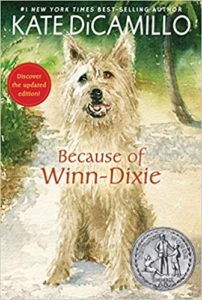 I don’t have such a memory of when her sister, Jessica, started to read, but Jessica and I both remember the first chapter book she read by herself at the age of six — Kate DiCamillo’s Because of Winn Dixie.
I don’t have such a memory of when her sister, Jessica, started to read, but Jessica and I both remember the first chapter book she read by herself at the age of six — Kate DiCamillo’s Because of Winn Dixie.
The remarkable thing about this to most people, though not to me, is I never taught Caitlin or Jessica to read. They taught themselves.
Not teaching them was a conscious decision on my part. I believed the quickest way to take the joy out of reading would be to sit them at the kitchen table, make them sound out letters, and force them to put those sounds into words and sentences.
Fostering a love of books
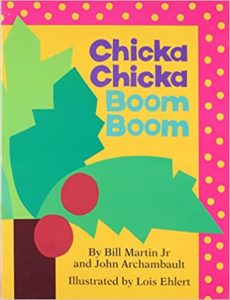 Instead of teaching our daughters to read, their father and I surrounded them with books. This wasn’t hard, we had shelves loaded with books even before they were born. We read to them throughout the day and every night before going to bed. We started with board books by Sandra Boynton (Moo, Baa, La, La, La), Margaret Wise Brown (Goodnight Moon), Don Freeman (Corduroy), and Bill Martin, Jr. and John Archambault (Chicka Chicka Boom Boom).
Instead of teaching our daughters to read, their father and I surrounded them with books. This wasn’t hard, we had shelves loaded with books even before they were born. We read to them throughout the day and every night before going to bed. We started with board books by Sandra Boynton (Moo, Baa, La, La, La), Margaret Wise Brown (Goodnight Moon), Don Freeman (Corduroy), and Bill Martin, Jr. and John Archambault (Chicka Chicka Boom Boom).
Picture books led seamlessly into chapter books. A particular favorite series was the Ramona Quimby books by Beverly Cleary. They made a big impact on Caitlin; today she has a car named Beatrice and a golden retriever puppy named Ramona.

In addition to reading to the girls, we took weekly trips to the library for story hour, listened to books on tape during lunch (Jim Dale’s version of the Harry Potter books are still a favorite), went to plays (and read the synopsis before the play started) and bookstores, and selected favorite books from Scholastic Book catalogs. Birthday, Christmas, and Easter presents included books. Learning to read was inevitable.
Children learn naturally
I think people forget that children are naturally curious and desperate to make sense of their world. They forget that there are no experts showing children how to take steps to walk or move their lips, tongues, and vocal cords to talk. Children pull themselves up and stumble through their first steps. They listen to their parents and siblings talk, hear music, watch TV, and then babble. Babbling leads to words and before long their vocabulary takes off.
Learning to read is no different — until the experts get involved.
Illiteracy in America
According to the National Center for Educational Statistics (NCES), 21 percent of American adults (approximately 43 million) fall into the illiterate/functionally illiterate category. This is despite the fact that the United States spends an average of $15,908 per pupil per year (U.S. Public Education Statistics).
Learning to read naturally versus the public school method
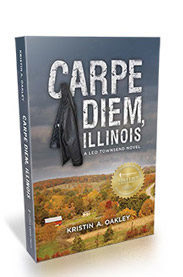 In my novel, Carpe Diem, Illinois, Chicago reporter Leo Townsend asks Stan and Judy Edwards about unschooling and learning to read. Leo says to Stan,
In my novel, Carpe Diem, Illinois, Chicago reporter Leo Townsend asks Stan and Judy Edwards about unschooling and learning to read. Leo says to Stan,
“But the schools’ methods work. It’s how I learned to read.”
“People learn to read despite what the schools do, not because of it,” Stan says. “Most kids have developed the ability to read by age seven or eight and would do so with or without any school program. And if the schools’ methods really work, why are so many high school graduates illiterate?”
“I heard some unschoolers don’t learn to read until they’re teenagers,” Leo countered.
“True, though it’s rare. Still, those kids develop heightened memories and when they do decode the written word, they’re reading challenging material. It’s like the child who doesn’t talk until age three who suddenly spouts out whole sentences.”
“We all develop at different ages,” Judy Edwards says. “But if school children don’t pick reading up at the same age as everyone else, then they’re put in a remedial reading group. That’s not what it’s called though the kids know what it is. It’s discouraging, humiliating. Reading is the last thing they want to do.”
“In Carpe Diem there’s no illiteracy,” Stan Edwards adds. “Everyone learns to read eventually. When doesn’t matter. How many people have you asked, ‘how old were you when you learned to read?'”
Trust your children
If you’re homeschooling your children, I urge you to surround them with books, read to them, discuss stories and enjoy them together. Trust that they’ll learn to read because they will.
For Writers and Readers:
 Check out my newsletter about my writing life. There are tips on how to manage your time, articles about the craft of writing and writers’ conferences, and so much more. Whether you’re a veteran author, someone who just has an idea for a book, or merely a book lover you’ll enjoy it. Click here to sign up!
Check out my newsletter about my writing life. There are tips on how to manage your time, articles about the craft of writing and writers’ conferences, and so much more. Whether you’re a veteran author, someone who just has an idea for a book, or merely a book lover you’ll enjoy it. Click here to sign up!


